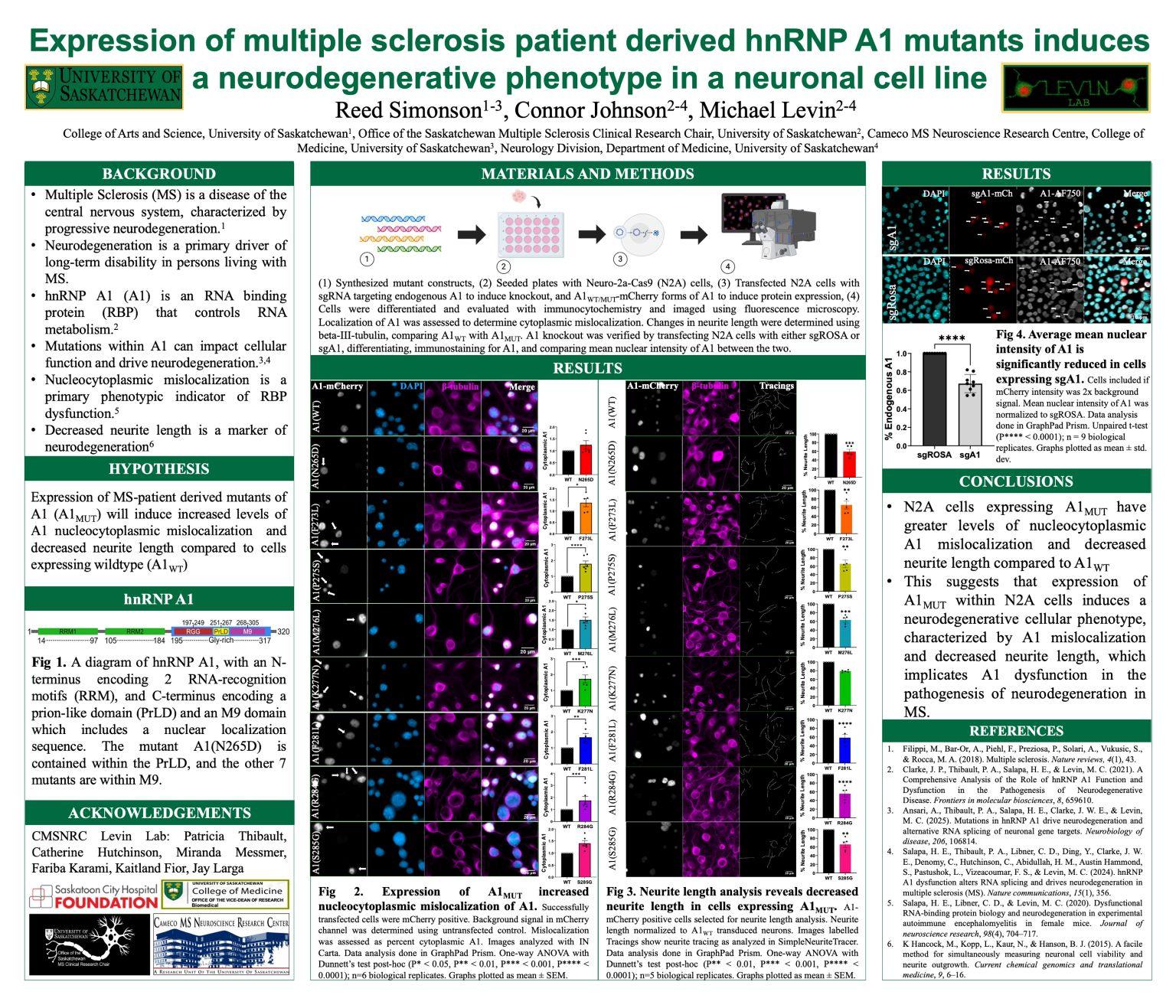
Evaluating the impact of Multiple Sclerosis patient-derived hnRNP A1 mutations on protein mislocalization and neuronal morphology
Reed Simonson
Heterogenous nuclear ribonucleoprotein A1 (A1) is an RNA-binding protein that is a potential cause of progressive neurodegeneration in multiple sclerosis (MS). A1’s mislocalization from the neuronal nucleus to cytoplasm has been linked to neurodegeneration. We hypothesized that A1 mislocalization would cause a neurogenerative phenotype in a neuronal cell line. This was tested using Neuro-2a-Cas9 cells, a neuronal cell line containing CRISPR-Cas9 to knock out endogenous A1 and introducing either wildtype (control) or MS patient-derived mutant A1 tagged with mCherry. The MS mutations led to significantly higher percentage of A1 in the neuronal cytoplasm, with levels of A1 mislocalization in mutants increasing over 50% on average with the most severe construct increasing by 79% (p<0.001). Analysis of neurite length showed that mutations led to significantly decreased neurite length compared to wildtype, with neurite length decreasing over 35% on average in the mutants (p<0.001). These results suggest that the expression of MS patient-derived A1 mutants induces a neurodegenerative cellular phenotype, characterized by A1 nucleocytoplasmic mislocalization and decreased neurite length. This implicates A1 dysfunction in the pathogenesis of neurodegeneration in MS and provides future avenues to explore the mechanisms that underlie disease progression.
